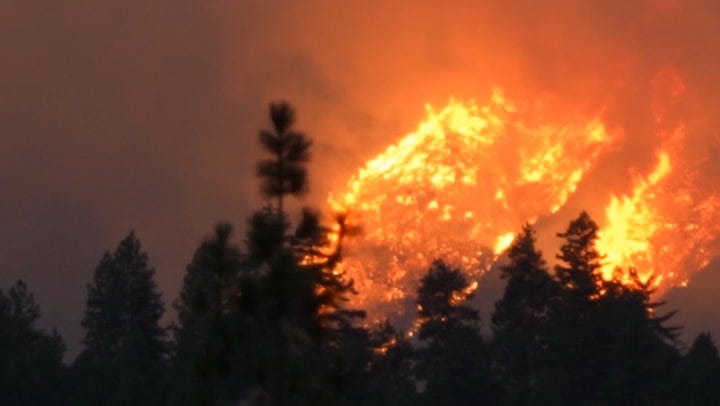
Wildfires may worsen as severe drought spreads across the West
Erratic winds and thunderstorms may create dangerous conditions for firefighters in the Northwest.
Accuweather, Accuweather
Firefighters already battling dozens of blazes across the West braced for more hot, dry weather Wednesday as dangerous conditions threatened to spark new wildfires in multiple states.
The National Weather Service issued red flag warnings in parts of California, Nevada and Oregon until Wednesday evening, expecting gusty winds and low humidity that could cause vegetation to burn rapidly.
In some areas, gusts could break 40 miles per hour with humidity in the single digits, which can cause fires “to rapidly grow in size and intensity before first responders can contain them,” the Weather Service in Reno, Nevada, said.
There are 25 active large wildfires in those three states, but across 12 states, 97 large wildfires have burned more than 2,900 square miles, according to the National Interagency Fire Center.
In northern California, the Dixie Fire remains the largest blaze in the state as conditions continue to stoke the flames. Firefighters on Tuesday saw activity on the east and west sides of the 395-square-mile blaze.
Additional evacuation orders came in Tuesday, affecting some 15,000 people as the fire jumped perimeter lines.
“I think we definitely have a few hard days ahead of us,” Shannon Prather with the U.S. Forest Service said, as conditions are expected to hold steady.
Mike Wink, a state fire operations section chief, said the fire created a pyrocumulus cloud, or “fire cloud,” on Tuesday.
The fire has been burning since July 13, destroying 67 structures and damaging nine others, according to the California Department of Forestry and Fire Protection.
Nearly 5,000 firefighters are working on the blaze, which is 35% contained.
Meanwhile, the McFarland Fire, about 150 miles west, has doubled in size every day since a lightning strike ignited the blaze less than a week ago. The fire is only 5% contained and has burned almost 25 square miles.
Scientists agree climate change caused conditions that led to warmer, drier weather across the West, making wildfires burn larger areas, more intensely and more frequently.
In Oregon, the state’s third largest fire in history, the Bootleg Fire, has burned more than 640 square miles. Although conditions remain dry, firefighters were making progress to improve fire lines, the Forest Service said, and the blaze was 84% contained.
In Hawaii, the largest-ever wildfire was also under better control after Tuesday saw slower winds and some rain.
“We have the fire surrounded,” Troy Gibson, the fire’s incident commander, told the Honolulu Star-Advertiser.
The fire had burned more 62 square miles on the Big Island.
Contributing: The Associated Press






